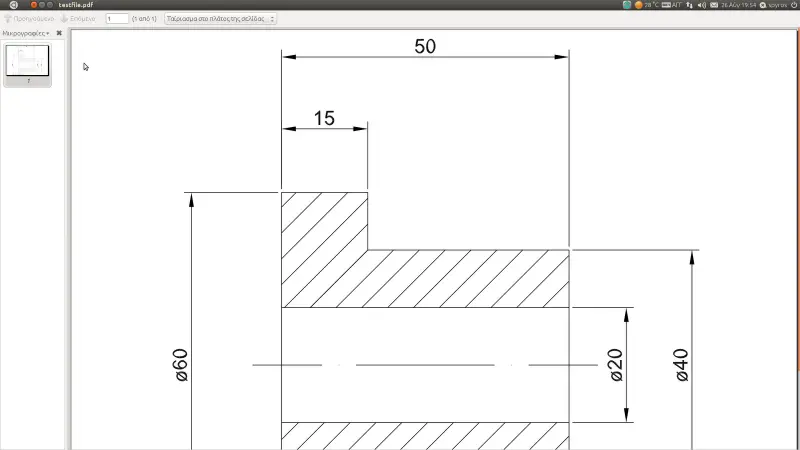
- #Draftsight pdf import full#
- #Draftsight pdf import software#
- #Draftsight pdf import plus#
- #Draftsight pdf import windows#
Several programming languages are supported, including LISP, C++, C#, VB.NET and JavaScript for maximum flexibility.īut even non-programmers should know of the API’s existence.
#Draftsight pdf import software#
While they may take a bit of practice to learn, the power of constraints make them worth learning.ĭraftSight’s API (application programming interface) can be used to automate many common processes within the software and allows you to create your own add-ins. In the before and after photo shown below, several geometric and dimensional constraints were added to the design and D2 was changed from 10 to 12 (using a simple double-click), automatically lengthening the required entities while keeping everything else intact. If you would like to turn these off, click the Options button (pictured above) and use the Hide All function or selectively choose the constraint types to hide.ĭimensional constraints function differently from traditional dimensions in that they directly control the size of the entity. You may notice the icons that appear indicating the type of constraints present in the design. Don’t forget, you can use the Enter key to repeat your last used command for a fast application of constraints.Īdditionally, coincident relations are very important for keeping entities connected during future changes. Once activated, select the entity or entities to apply the constraint to, and in just a few clicks you will have a more robust design that can easily be changed without any extra work. The handles will control the visibility state of the dynamic block just as they did in AutoCAD, making it exceptionally easy to swap between different variants. Simply insert the dynamic block, specify position/size/rotation and then select the block to view the configuration handles.
#Draftsight pdf import plus#
All versions of DraftSight allow you to insert, view and configure existing dynamic blocks from AutoCAD, while DraftSight Premium and Enterprise Plus also allow those blocks to be edited.
#Draftsight pdf import full#
Understandably, many DraftSight users are AutoCAD veterans and often have libraries full of dynamic blocks created with AutoCAD that they would like to reuse.

If preferred, the pattern can be double-clicked or the EDITPATTERN command can be used to adjust the pattern options using the original dialog. Click and drag the second handle to dynamically modify instance spacing, and then click and drag the third handle toward the source geometry to remove pattern instances or away from it to add instances. Click and drag the first handle to reposition the entire pattern as a group. Now you can verify/review the data and then either work with it in DraftSight or import this into another CAD application to work with the data.Once created, you will find that clicking any of the pattern entities selects all of the instances and additional handles become available. Once it runs, it will show the points on the screen and also show the command that ran from the script (See Figure #5).įigure #5 – DraftSight – Result of Script Being Ran Then select the script file (See Figure #4).įigure #4 – DraftSight – Open Script File Then go in DraftSight and on the Manage tab select “Run Script…” (See Figure #3).įigure #3 – DraftSight – Manage tab | Run Scirpt… Then rename the file from “SampleXYZ_Script.txt” to “SampleXYZ_Script.scr”.
#Draftsight pdf import windows#
Then close out of the text editor and open Windows Explorer. “POINT” to the first line, and “M” to the second line which tells DraftSight what the entities are in the file below (See Figure #2). Once you have the data in a CSV file, you need to open it in a text editor (Notepad ++ for example) and then add two lines to the top of the file. If this is a text file you may have to either add the commas or import them into a spreadsheet and then back out depending on the amount of data.

If you have this as a spreadsheet, you can export it to a CSV (comma delimitated) file.

Data Sourceįigure #1 – Spreadsheet & Text File Data Examples This is beneficial because DraftSight and programs like it will handle large amounts of data very well and allow you to visualize the data before trying to import it into other applications like SOLIDWORKS. This article explains the steps to take XYZ data from a spreadsheet or existing text file (See Figure #1) and turn it into a script that we can then import into DraftSight.


 0 kommentar(er)
0 kommentar(er)
